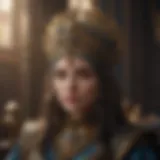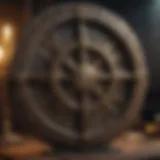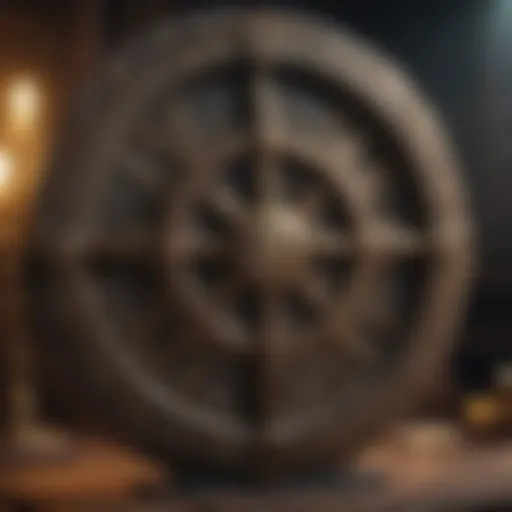Discovering Your Ideal Tarot Card for Insight
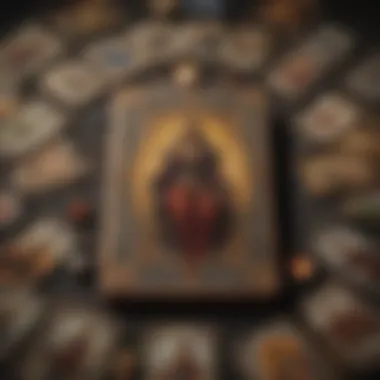

Intro
Identifying the right tarot card for personal insight can be a transformative experience. Each card carries unique meanings and associations that can resonate with individuals in diverse ways. The practice of tarot is not merely about divination; it’s a profound tool for introspection and personal growth. In this exploration, we will delve into the characteristics of tarot cards, their meanings, and how to interpret them effectively.
Characteristics of Each Zodiac Sign
Understanding zodiac signs is essential for those interested in tarot. Each sign resonates with particular energies and attributes, providing a backdrop to understand personal tarot experiences better.
Overview of personality traits
- Aries: Bold, energetic, and often impulsive.
- Taurus: Grounded, reliable, and sometimes stubborn.
- Gemini: Curious, adaptable, and sociable.
- Cancer: Emotional, nurturing, and protective.
- Leo: Charismatic, confident, and occasionally domineering.
- Virgo: Analytical, detail-oriented, and often critical.
- Libra: Diplomatic, fair-minded, and indecisive.
- Scorpio: Intense, passionate, and secretive.
- Sagittarius: Adventurous, optimistic, and sometimes reckless.
- Capricorn: Disciplined, ambitious, and potentially aloof.
- Aquarius: Innovative, humanitarian, and unpredictable.
- Pisces: Compassionate, artistic, and often escapist.
Each personality presents a way to connect with tarot. Understanding your zodiac sign can assist in selecting a card which best reflects inner traits, challenges, and aspirations.
Strengths and weaknesses
Each sign has qualities that can be seen as strengths or weaknesses. For example, Leo's confidence can be a strength in decision-making but may lead to arrogance.
Compatibility with other signs
When exploring relationships and interactions through tarot, knowing zodiac compatibility can enhance the understanding of chosen cards. Looking at astrological compatibility allows for richer interpretations during readings.
How to Interpret Tarot Cards
Delving into tarot requires an understanding of its structure: the Major and Minor Arcana.
Major and Minor Arcana
- Major Arcana: 22 cards that represent significant themes and lessons. For example, The Fool symbolizes new beginnings, while The World signifies completion.
- Minor Arcana: 56 cards divided into four suits (Cups, Pentacles, Swords, Wands). Each suit illustrates mundane aspects of life, with number cards and court cards offering nuanced meanings.
Meaning of key cards
Some prominent cards include:
- The Lovers: Represents choices and duality, particularly in relationships.
- The Tower: Symbolizes sudden upheaval and chaos, prompting introspection.
Sample interpretations in different spreads
- Three-card spread: Past, Present, Future.
- Celtic Cross: Offers comprehensive insight into a situation.
Overview of deck styles
Decks vary in artistic representation and theme, influencing the reading experience. Common styles include traditional tarot, oracle decks, and themed decks like the Wild Unknown.
Popular decks and their unique features
- Rider-Waite Tarot: Renowned for its imagery and symbolism, widely used by beginners.
- Thoth Tarot: Noted for its complexity and rich symbolism, appeals to more advanced readers.
"Understanding the meanings behind each tarot card can provide a pathway to clarity and self-awareness."
Culmination
In summary, comprehending the intricacies of tarot cards, along with one's zodiac sign, creates a deeper connection to personal insight. The journey through tarot demands an open mind and a willingness to reflect. Whether you are new to tarot or an experienced practitioner, establishing a personal relationship with the cards will enhance your ability to navigate life's complexities.
Understanding Tarot Cards
Understanding tarot cards is crucial for anyone seeking personal insights and guidance. Tarot serves as a unique tool that combines symbolism, intuition, and psychological reflection. Each card within a tarot deck is imbued with meanings that resonate on multiple levels. By delving into the world of tarot, individuals can unlock pathways to self-awareness and deeper comprehension of their life's circumstances.
The significance of comprehending tarot cards extends beyond mere definitions. It involves an exploration of how these cards can reflect our inner thoughts and feelings. Many practitioners find that reflecting on the images and messages portrayed in the cards can lead to profound insights about their personal situations.
This article will provide a comprehensive overview of the components and structure of tarot decks, as well as the importance of the Major and Minor Arcana. Each section will align with the overarching theme: identifying which tarot card resonates most intimately with the individual seeking clarity.
The Structure of Tarot Decks
A standard tarot deck typically consists of 78 cards, divided into two main sections: the Major Arcana and the Minor Arcana. Understanding the structure and function of these elements is foundational in navigating through tarot readings. The 22 Major Arcana cards represent significant life themes and spiritual lessons. These cards often carry a weight of importance, as they depict vital experiences that shape one’s journey.
Conversely, the 56 Minor Arcana cards cover more mundane aspects of life, offering insight into daily experiences and challenges. They further break into four suits, akin to traditional playing cards, which are Wands, Cups, Swords, and Pentacles. Each suit represents different facets of existence, with Wands standing for creativity and action, Cups for emotions, Swords for intellect and conflict, and Pentacles for material concerns.
Understanding this structure equips individuals with a framework to interpret their readings effectively, enhancing the overall tarot experience.
Major and Minor Arcana
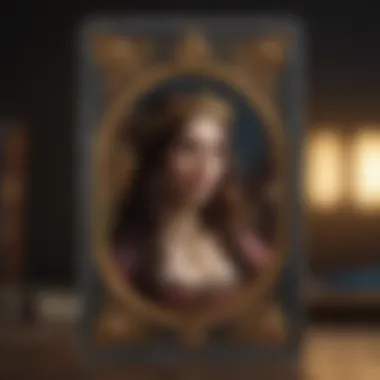

The distinction between the Major and Minor Arcana is essential for interpreting tarot readings accurately. The Major Arcana signifies major life events, challenges, and transformative experiences that are often beyond individual control. Cards like The Fool or The Tower can symbolize new beginnings, upheavals, or milestones.
In contrast, the Minor Arcana offers insights into everyday situations, choices, and emotions. For instance, a card like Five of Cups may convey feelings of loss while Nine of Pentacles highlights self-sufficiency and accomplishments.
Grasping the importance of both groups empowers readers to extract layered meanings from their readings. As one navigates through different life phases, certain cards from both the Major and Minor Arcana may resonate more deeply, guiding self-reflection and personal growth.
"The distinction between the Major and Minor Arcana is vital for accurate tarot interpretations, influencing the insights gleaned from each reading."
The Role of Tarot in Personal Growth
Understanding the role of Tarot in personal growth is crucial for individuals seeking self-awareness and insight. Tarot acts as a mirror, reflecting inner thoughts and feelings that may not be easily accessible through conventional methods. By exploring the symbolism and imagery of the cards, individuals can unveil unique aspects of their personalities and experiences. The benefits of using Tarot for personal growth extend beyond mere divination; they include fostering emotional intelligence, enhancing decision-making skills, and cultivating mindfulness.
Self-Discovery through Tarot
Self-discovery is an essential journey for anyone aiming to understand their true self. Tarot cards provide a structured yet flexible framework that allows individuals to delve deep into their subconscious. When one engages with Tarot, it often sparks introspection and contemplation. Each card carries specific meanings and associations that resonate differently with different people.
For example, when drawing The Lovers card, it may evoke reflections on relationships, choices, or self-love. The imagery can activate personal memories or feelings, guiding individuals to discover underlying desires or fears that influence their decisions. This process encourages active participation in one’s growth and reflection.
Incorporating regular Tarot readings into one’s routine can significantly aid self-discovery. Keeping a journal for these sessions further enhances this practice, documenting insights, feelings, and evolving interpretations over time. This keeps a record of the journey, ultimately leading to a clearer understanding of the self.
Enhancing Intuition
Intuition plays a pivotal role in decision-making and life choices. Tarot encourages individuals to tap into their intuitive abilities. Each card demands personal engagement and interpretation, enhancing one's ability to read subtle cues from the environment and within themselves.
Practicing Tarot can develop one's intuitive skills. The process of reflecting on a card's meaning in relation to one’s life can foster a deeper trust in gut feelings and instincts. By recognizing patterns and outcomes from past readings, individuals learn to discern when their intuition speaks, thus shaping a more confident approach to navigating life's challenges.
Additionally, Tarot can serve as a tool for mindfulness, reminding individuals to be present and attuned to their feelings. This mindfulness is fundamental for enhancing intuition, as it creates a clear pathway for internal dialogue. Having rituals around Tarot readings—such as meditative practices or quiet spaces—can create an environment that bolsters this intuitive connection further.
Tarot is not just about the cards; it is about the connection between the cards, the reader, and the journey each person undertakes.
In summary, the role of Tarot in personal growth encompasses self-discovery and the enhancement of intuition. Engaging with Tarot can lead individuals to a more profound understanding of their inner world, equipping them for the challenges and opportunities that life presents.
Criteria for the Best Tarot Card
Choosing the best tarot card for personal insight is not merely a matter of preference. It requires an understanding of various criteria that impact the significance and resonance of a card with an individual. This section will delve into the crucial aspects of personal relevance, symbolic meaning, and cultural context that shape your interaction with tarot cards. Analyzing these factors can enhance your tarot experience, leading to deeper self-awareness and clarity in your path.
Personal Relevance
When selecting a tarot card, personal relevance is paramount. Each card carries unique characteristics that may speak to different individuals based on their experiences and feelings. A card resonates with you if it reflects your current situation or emotional state. For instance, The Fool card symbolizes new beginnings and adventures, which may strike a chord for someone embarking on a new journey in life.
Understanding personal relevance also involves recognizing how different archetypes within tarot embody traits or lessons applicable to your life. Reflecting on past experiences can help you identify which cards hold significance for you. Consider moments of change, growth, or self-discovery. Journaling about these moments can further reveal connections between your life and specific tarot cards. By doing so, you may discover which card(s) will aid you in seeking insight or guidance.
Symbolic Meaning
Symbolic meaning is another critical criterion in identifying your best tarot card. Each card is rich with symbols that hold various interpretations depending on the context. For instance, The High Priestess embodies intuition and the unconscious mind, encouraging trust in one’s inner voice.
Familiarizing yourself with the key symbols associated with tarot cards can unlock deeper layers of meaning. Symbols may include numerical values, colors, and imagery contained within the cards. These elements contribute to the overall message each card conveys and can help you align your understanding with your personal journey.
Moreover, it is beneficial to reflect on how these symbols resonate with your current life circumstances. Engaging with the meanings can deepen your connection to the cards. Whether a card's imagery evokes a sense of peace or challenge, understanding its symbolism is an important step toward selecting your optimal tarot card.
Cultural Context
Cultural context plays a significant role in the interpretation of tarot cards. The meanings ascribed to various cards can differ across different traditions or schools of thought. For instance, within the Rider-Waite tarot system, The Empress symbolizes fertility and nurturing, while in other traditions, it may embody different aspects of womanhood or creation.
Being aware of the cultural backgrounds of tarot decks can highlight alternative interpretations that might resonate more with you. Engage with scholarly works or community discussions to enrich your understanding of the cultural significance. This exploration helps broaden your perspective and may guide you toward cards that align with your worldview.
"Tarot is not just a tool for divination; it is a mirror reflecting our thoughts, behaviors, and attitudes. Understanding the context behind this mirror can enhance the clarity it provides."
In summary, identifying the best tarot card involves careful consideration of personal relevance, symbolic meaning, and cultural context. Each criterion interplays with the others, forming a comprehensive understanding of how tarot can guide self-reflection and personal growth. Engaging thoroughly with these aspects will not only augment your insight but also enrich your tarot journey.
Popular Tarot Cards for Insight
The exploration of popular tarot cards offers a lens through which individuals can understand their own experiences and gain personal insight. Each card serves as a symbol rich with meanings, providing not only guidance but also a reflective pathway to understanding oneself. Selected cards resonate based on individual context, unfolding layers of insights that may have been previously overlooked. Consideration of specific tarot cards can facilitate self-reflection and healing, making them essential tools in journeys of personal growth.
The Fool
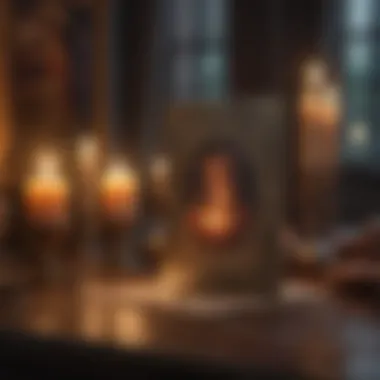

The Fool card stands as the embodiment of new beginnings and potential. Often depicted as a carefree figure poised at the edge of a cliff, this card represents the thrill of embarking on an adventure. It encourages an open mind and a willingness to embrace the unknown. Emphasizing spontaneity and trust in the process of life, The Fool invites one to let go of past burdens and to step courageously into new circumstances. Its relevance is profound in situations of change, infusing individuals with courage to take calculated risks.
The Magician
The Magician represents action, resourcefulness, and the manifestation of one’s goals. This card illustrates the power of focus and determination. With all four suits of the tarot present, The Magician symbolizes the ability to harness one’s environment and inner potential to create desired outcomes. It suggests that individuals hold the tools necessary to shape their reality. This card speaks to the importance of initiative. It can serve as a powerful reminder of personal agency, prompting self-empowerment and strategic planning.
The High Priestess
In contrast to The Magician, The High Priestess embodies intuition and the exploration of deeper truths. She is often portrayed sitting before a veil, signaling the mysteries of the subconscious and the unseen. This card imparts wisdom and encourages introspection, guiding individuals to listen to their inner voice. Emphasizing the significance of intuition, The High Priestess suggests that true insight often arises from within, making it essential for personal transformation. Engaging with this card can enhance one’s reflective practice and shift focus towards inner guidance.
The Empress
The Empress symbolizes fertility, nurture, and abundance. Depicted as a motherly figure, this card represents the beauty of creation and the importance of connectivity with one’s surroundings. Engaging with The Empress can facilitate acceptance and emotional well-being. This card often encourages individuals to cultivate love and compassion, both for themselves and others. In searching for personal insight, The Empress calls individuals to recognize the value of self-care and to embrace their nurturing qualities.
The Emperor
The Emperor stands for structure, authority, and control. Representing stability and leadership, this card provides a grounding influence. It urges individuals to establish clear boundaries and to take charge of their personal narrative. The presence of The Emperor during readings can highlight the importance of discipline and strategic planning in achieving one’s goals. Emphasizing rational thought and decision-making, engaging with this card can assist individuals in determining paths toward success, instilling a sense of confidence and direction.
The Wheel of Fortune
Finally, The Wheel of Fortune symbolizes cycles, change, and destiny. It serves as a reminder that life is full of ups and downs, and nothing remains stagnant. This card encourages acceptance of life’s ebb and flow, urging individuals to remain adaptable in the face of change. The Wheel of Fortune highlights the interplay of fate and personal choice, suggesting that while some elements are beyond control, individuals can respond and adapt to new circumstances. Engaging with this card can provide reassurance and perspective in tumultuous times, fostering resilience and hope.
Understanding these popular tarot cards deepens personal insight. Each card can serve as a tool for self-reflection and guidance, revealing different aspects of one’s journey.
Finding Your Best Tarot Card
In the realm of tarot, finding the best card for personal insight is crucial. This process allows individuals to connect deeply with their inner thoughts and feelings. It is more than a casual selection; it involves a mindful engagement that can reveal new perspectives.
Each tarot card carries unique meanings and energies. A card that resonates with one person might hold a different significance for another. Therefore, identifying a card that feels right can open doors to self-discovery and clarity. The insights gained through this process extend beyond divination; they provide a framework for introspection and self-improvement.
This section aims to guide readers through two significant methods for finding the best tarot card: the intuitive selection process and reflective journaling. These approaches enable individuals to engage with their tarot deck in a personalized manner, fostering a deeper understanding of themselves and the cards they choose.
Intuitive Selection Process
The intuitive selection process is an essential element in finding your best tarot card. This method relies on one’s instincts and feelings rather than analytical reasoning. The idea is to allow your intuition to guide you. When you shuffle the deck, pay attention to what draws your focus. It could be a particular card or even the energy of the deck.
Consider these steps for an effective intuitive process:
- Set your intention. Before you begin, think about what you want to gain from the reading. This focus can create clarity.
- Shuffle the cards. As you shuffle, clear your mind of distractions. This helps to enable a connection with your inner voice.
- Choose a card. Let the card choose you, whether it flips over or you simply feel drawn to it.
- Reflect on your choice. Once you have selected a card, think about what it means to you personally. Its imagery and symbolism should resonate with your situation.
This method emphasizes personal connection, making it a profound way to determine your ideal tarot card.
Reflective Journaling
Journaling is another powerful technique for identifying your best tarot card. This practice encourages deeper self-exploration and comprehension of your emotional state. By writing out your thoughts and interpretations related to the cards, you can uncover patterns and insights over time.
Here are a few guidelines on how to use reflective journaling effectively:
- Document your selections. After each reading, write down the cards you chose and any immediate thoughts or feelings.
- Explore your reactions. Note your emotional responses and any significant observations that arise as you reflect on the cards.
- Record themes. As you progress, look for common themes or symbols that appear within your journaling. They may indicate cards that resonate more strongly with you.
Through reflective journaling, you create a tangible record of your relationship with tarot, allowing for growth and understanding. This method not only enriches your practice but can also provide clarity on which card to focus on for personal insight.
"Tarot is a mirror reflecting back to us our innermost selves. It is through these connections that we truly find our path."
Combining these two methods enhances your tarot experience. Both the intuitive selection process and reflective journaling create a framework for discovering the most relevant card for your journey.
Personalizing Your Tarot Experience
Personalizing your tarot experience is crucial for gaining deeper insights and meaningful connections with your cards. Each person's journey with tarot is unique. A personalized approach allows individuals to cultivate a bond with their cards. This bond enhances intuition and increases effectiveness in readings. It emphasizes the importance of experiencing tarot as an interactive journey rather than just a tool for divination.
When a tarot reader personalizes their experience, they engage more profoundly with the symbolism and meanings associated with their chosen cards. This can lead to transformative moments that deepen self-understanding. Furthermore, understanding one’s psychological and emotional landscape is essential. Tarot serves as a reflective surface, revealing hidden aspects of oneself.
Some benefits of personalizing your tarot experience include:
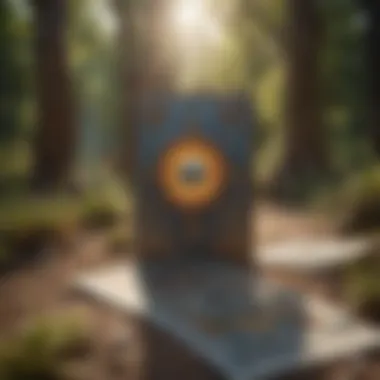

- Improved Intuition: A connection to cards can sharpen intuitive abilities, making readings more insightful.
- Enhanced Meaning: Personalized connections can bring new layers of significance to card meanings.
- Consistent Engagement: Establishing rituals and preferences makes the practice more enjoyable and dedicated.
- Self-Reflection: A personalized approach encourages regular reflections, cultivating mindfulness and self-awareness.
Creating a personalized tarot experience does take time and consideration. The journey varies with individual beliefs, cultural backgrounds, and personal aspirations. Being aware of these factors enhances how one connects with tarot and interprets its guidance.
Creating a Connection with Your Cards
Building a connection with tarot cards is about more than familiarity; it's about forming a relationship. This relationship is vital for effective readings. A card that resonates emotionally or spiritually can offer profound insights. Start by considering the attractions you feel towards specific cards. Perhaps it’s the imagery, colors, or the stories they tell that draw you in. Engage in a process of discovery:
- Choose Your Deck: Select a tarot deck that speaks to you. Each deck has its unique energy and themes. Your choice plays a significant role in your connection.
- Spend Time with Your Cards: Handle them often, familiarize yourself with their textures, and observe their artwork. This physical interaction creates a bond.
- Meditate with Your Cards: Take time to meditate on certain cards. Allow their meanings to unfold in your mind. This reflection can lead to personal interpretations that resonate more deeply.
- Journal Your Experiences: Keep a tarot journal. Record your thoughts, feelings, and insights after readings. This can foster a deeper understanding of the cards over time.
"The connection you form with your deck will become a source of wisdom, guiding you in both mundane and transformative aspects of life."
Establishing Rituals
Rituals play an important role in creating a meaningful tarot practice. They help in establishing focus and intention. Rituals can vary from simple actions to elaborate procedures. What matters is how they contribute to your tarot experience. Here are ways to set up rituals:
- Consistent Timing: Regularly dedicate specific times for tarot readings. This builds anticipation and transforms readings into special events.
- Sacred Space: Create an environment that feels sacred or calming. This could be a corner of a room where you lay down a cloth, light candles, or burn incense. A dedicated space encourages a mindful approach to readings.
- Intentional Cleansing: Before each session, consider a cleansing ritual. This may include shuffling the cards with the intention of clearing stale energy or using sound to purify your reading space.
- Reflection Ritual: After each reading, take time to reflect. Recap what the cards revealed, what emotions surfaced, and how the reading might guide your actions.
By establishing rituals, you give your tarot practice structure. This structure can elevate readings and provide a framework for introspection. There are no strict rules, but consistency is key. Engaging personally and ritualistically with tarot will enrich your experience and deepen your insights.
Common Misconceptions about Tarot
Understanding the prevalent misconceptions about tarot cards is vital for anyone interested in their use for personal insight. Misunderstandings can hinder appreciation and proper application of tarot as a tool for reflection and self-discovery. By clarifying these myths, individuals can approach tarot with an open mind, allowing for a deeper connection with the cards and their meanings. Moreover, dispelling these misconceptions helps in fostering a more authentic relationship with the practice, benefiting both seasoned practitioners and newcomers alike.
Tarot as Fortune Telling
One of the most common misconceptions about tarot is the belief that it serves solely as a means of fortune telling. Many perceive tarot cards as harbingers of fate, offering concrete predictions about the future. While some tarot readers may emphasize predictive elements, this perspective overlooks the significant psychological and reflective aspects of tarot reading.
Tarot is largely a tool for introspection and exploration, guiding individuals to understand their thoughts, emotions, and circumstances. Instead of determining a fixed future, tarot reveals insights regarding current situations and potential paths forward. This aspect of tarot facilitates decision-making rather than fostering fatalism.
Moreover, relying on tarot cards for predictions can cultivate an unhealthy dependency on the cards. Rather than empowering oneself through insight, individuals may anxiously await a predetermined outcome. It is essential to recognize that tarot readings can reflect personal insight and not merely portend events.
The Complexity of Meanings
Another misconception lies in the belief that each tarot card has a single, definitive meaning. In reality, tarot cards possess layers of significance that can shift based on context, question, and individual interpretation. Each card can resonate differently with each reader and querent, influenced by their experiences and intentions.
For instance, The Tower card does not solely symbolize destruction or upheaval. In some contexts, it can indicate sudden change that leads to growth or liberation. Similarly, The Empress may embody the concepts of fertility, abundance, or even creativity, depending on the inquiry at hand.
Misunderstanding the complexity of tarot card meanings can reduce their efficacy and relevance in readings. To enhance one’s understanding of tarot, practitioners should engage with multiple interpretations and practice flexibility in their interpretations.
"A tarot reading is not about predicting the future, but realizing the potential within oneself."
In summary, understanding the common misconceptions about tarot helps in fostering a more nuanced interpretation of the cards. Recognizing that tarot is not merely fortune telling, but a multifaceted tool for introspection aids individuals in developing a deeper connection with their tarot practice. Furthermore, acknowledging the complexity of each card’s meaning ultimately enriches the experience, allowing for a more meaningful and personal understanding.
The Future of Tarot and Personal Insight
The future of tarot as a tool for personal insight is on the brink of an evolutionary phase. Since its inception, tarot has been intertwined with cultural narratives and personal discovery. As society progresses, so too does the application and understanding of tarot cards in self-reflection. The relevance of tarot in contemporary contexts cannot be understated. Recognizing how this ancient practice adapts can enhance its effectiveness and accessibility for modern practitioners.
A keen awareness of the future paths tarot may take can lead to several benefits:
- Increased Reach: More individuals can benefit from tarot readings, as newer methods resonate with a wider audience.
- Innovative Practices: Integration with current thoughts and lifestyles promotes creativity in interpretations.
- Community Building: Engagement can facilitate stronger connections among tarot enthusiasts, fostering discussion and the sharing of ideas.
As we look toward the future of tarot, we must remain conscious of these evolving scenarios and their implications for personal insight.
Adapting Tarot to Modern Contexts
To remain relevant, tarot must integrate into contemporary life. This is not merely a matter of preserving tradition; it involves reevaluating how tarot connects with individuals today. One approach is contextualizing tarot implications within modern challenges. For instance, the card imagery can reflect current societal issues, empathy, and self-awareness.
Moreover, practitioners might consider the demographics they reach: younger audiences often seek authenticity. Tailoring messaging to align with progressive values can provide a fresh take on traditional cards. Some practitioners find success by discussing mental health themes and personal empowerment through the lens of tarot. This allows for a meaningful dialogue with the cards in today’s society.
Integrating Technology with Tarot
Technology is reshaping many aspects of life, including spirituality. The incorporation of digital tools into tarot practice opens various avenues for exploration. Mobile applications, for instance, can guide individuals in pulling cards, interpreting them, and journaling insights. Such features offer convenience and accessibility that paper manuals may lack.
Social media platforms serve as additional touchpoints. The rise of community forums on sites like Reddit allows for the sharing of experiences, interpretations, and educational content. Utilizing these spaces fosters a sense of connection. Practitioners can develop a broader understanding of diverse tarot interpretations.
Marketing through modern channels encourages a dynamic approach. Content creators can expand on common themes in tarot, creating engaging posts. Videos that explain card symbolism or the meaning of certain combinations can captivate audiences.
"The integration of technology with tarot not only preserves its essence but also allows for new interpretations to flourish in a diverse landscape."
Ultimately, moving forward, the relationship between tarot and personal insight can flourish through adaptability. Understanding modern contexts and embracing technology are crucial steps in this journey.
